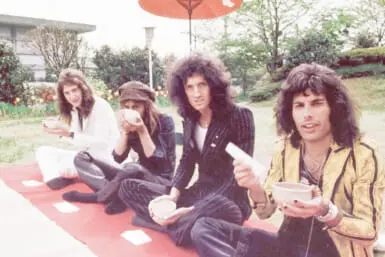Not so much a movement as an obsession with japonaiseries (things imported from Japan to Europe), Japonism was coined as the official term for this brief period in time in the second half of the 19th century when the Western art world discovered Japanese art.
European masters drew inspiration from ukiyo-e, or Japanese woodblock prints, which were commercially produced as souvenirs at the time, and Hokusai was not yet the icon that he is today. Ukiyo-e influenced the first movements in modern art in its use of color and composition, leading artists like Van Gogh, Degas and Klimt to paint asymmetrical sceneries of common citizens placed within their surrounding city. In contemporary Tokyo, the same artists constantly appear in gallery exhibitions – and if they’re omitted from the artwork selection, they are surely mentioned in the gallery pamphlet.
Japonism, by definition, relies on 18th- and 19th-century Japanese art. In the 2019, however, one artist is seeking to rekindle the movement through the elegant swirls of Japanese calligraphy.
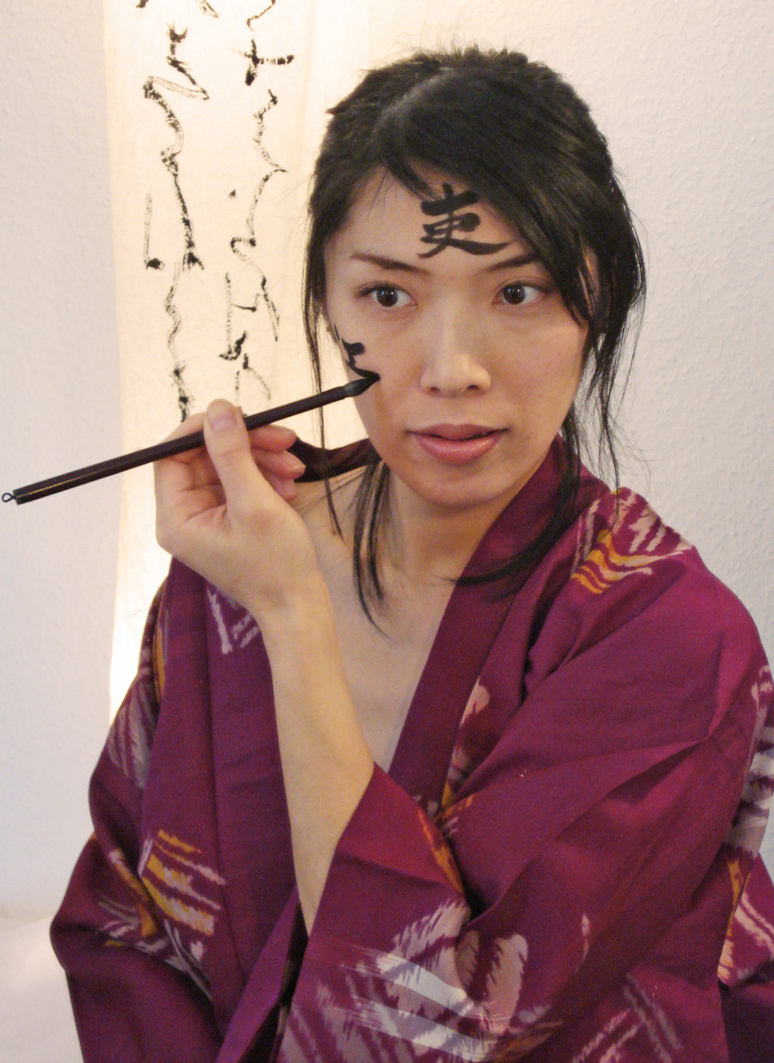
Germany-based artist Rie Takeda was born in Hokkaido, where she started learning calligraphy at the age of 5. In the early 2000s, she moved to Europe, often flying back and forth between London and Berlin/Freiburg, to pursue her career as an artist. Though her heart was in contemporary arts, calligraphy remained something that she wanted to incorporate and share. It wasn’t only beautiful; the traditional art’s greatest appeal is its application. Takeda describes calligraphy as meditative and a practice that helps her keep her mind clear and calm.
Her impressive portfolio shows she is talented in both visual arts and poetry, often combining the two, and a style Takeda created and registered as neo-japonism was born from the fusion between traditional Japanese art and contemporary techniques. Takeda describes her work as multi-layered, both literally and metaphorically. To the observer it can be described as a harmonious marriage of beautiful calligraphy and imagery with a Western contemporary flair. Takeda’s most distinguishable works are her prints and body art performances.
Created using bold colors, recognizable Japanese patterns, poetry and calligraphy, Takeda’s prints are a striking portrait of Japan’s metropolises, incorporating modern architecture and shrines and temples. They are vibrant and loud, like many modern trends, while conveying delicacy and softness in the strokes.
The prints are Takeda’s modern take on ukiyo-e, pulling elements from nature to inspire the visuals, and integrating poetry without disturbing the balance of the composition. Her poems are minimalist; they carry meaning, but also add a modern graphic feel to the print with their pronounced size and bold lettering.
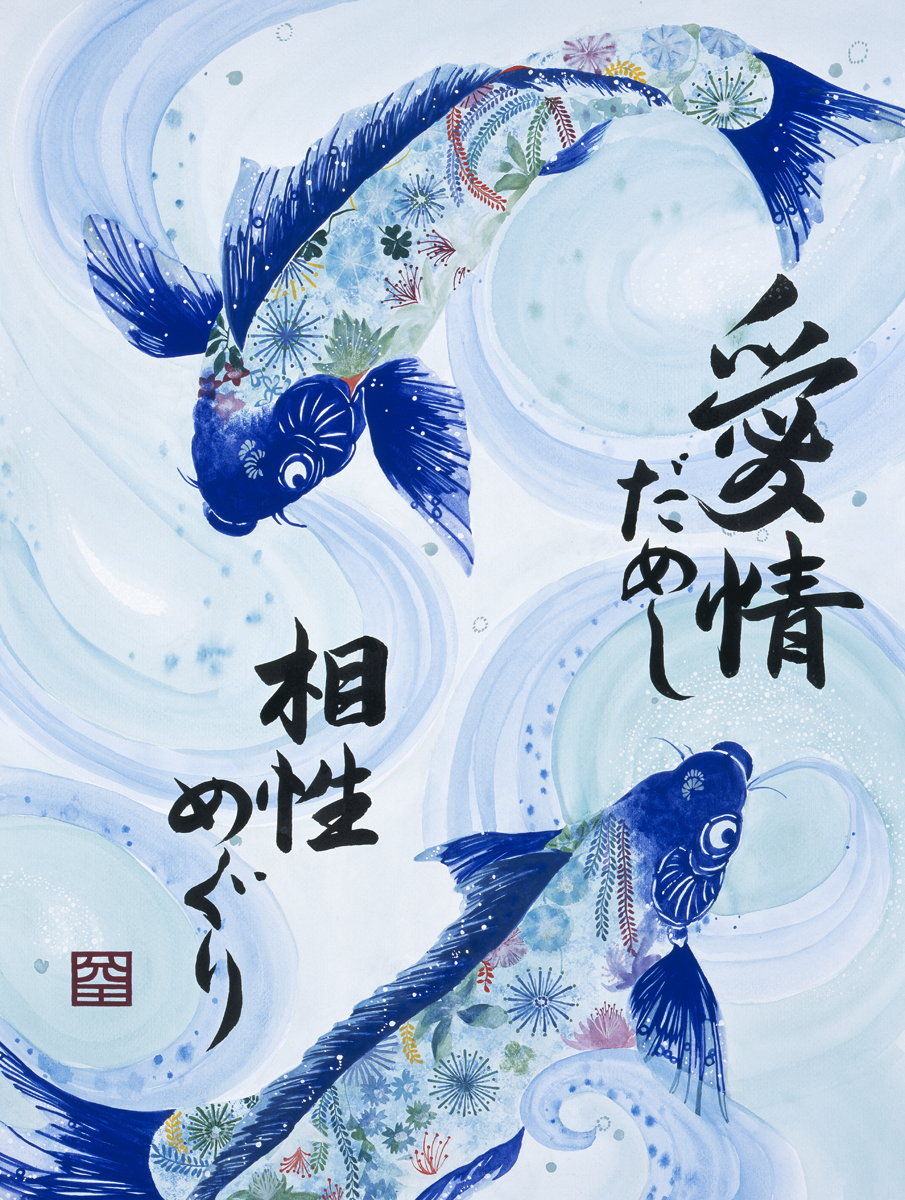
♧ love chemistry in enso blue, Courtesy of Rie Takeda
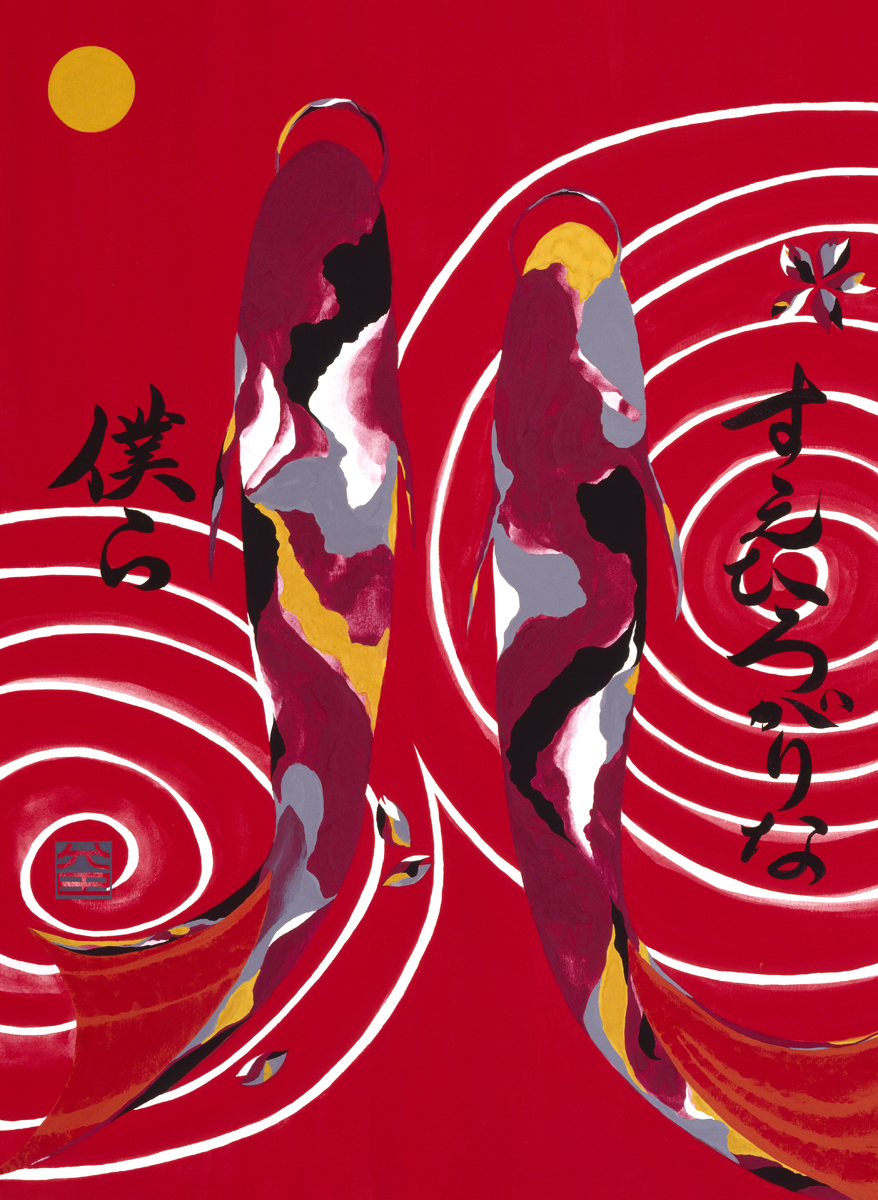
♧ Tail dance Fortune dance, Courtesy of Rie Takeda
Takeda’s most prominent project, however, has to do with body art. Her approach is holistic. It’s a process that’s deeper and more complex than simply writing a poem on a body. It starts with a conversation with the model and ends with the composition of a poem inspired by an emotion, a memory, a moment that holds special meaning to the model.
Takeda then translates the message in Japanese. The performance piece involves the artist painting the poem using the style of Japanese calligraphy that she feels is most appropriate and follows the contours of the body so that the strokes and words mesh with the shape of the model. Because the poem is in Japanese, most of the public cannot read it; it remains a secret between the artist and her canvas. While Takeda paints the poem, the model is left with her thoughts; the thoughts of this poem that has meaning and weight, circling back to creating a meditative state.
Art is the truest form of therapy and a door to introspection in the eyes of the calligrapher, and this shows in the ways her work moves those who lay eyes upon it.
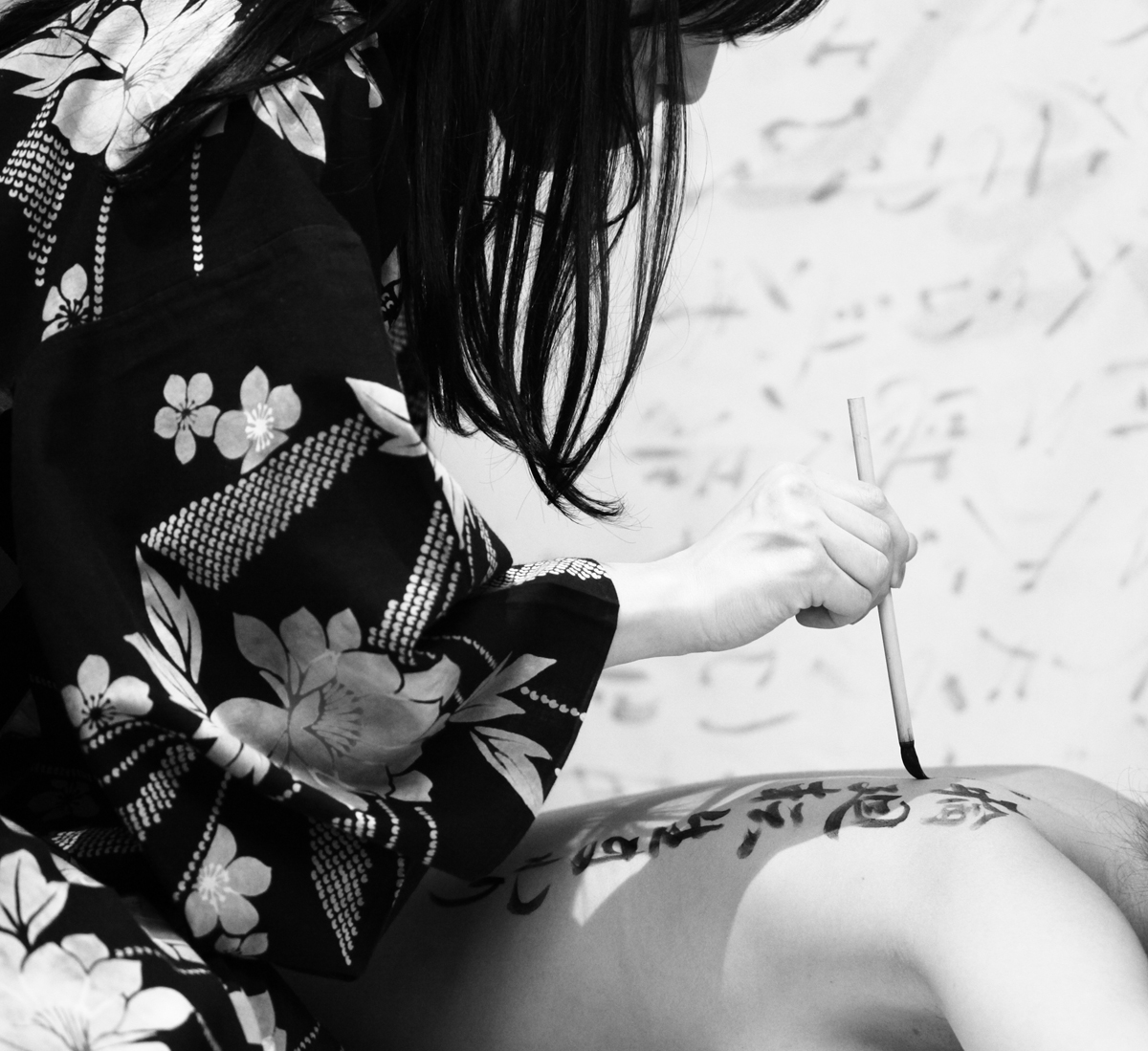
Photo by Raphael Rapior
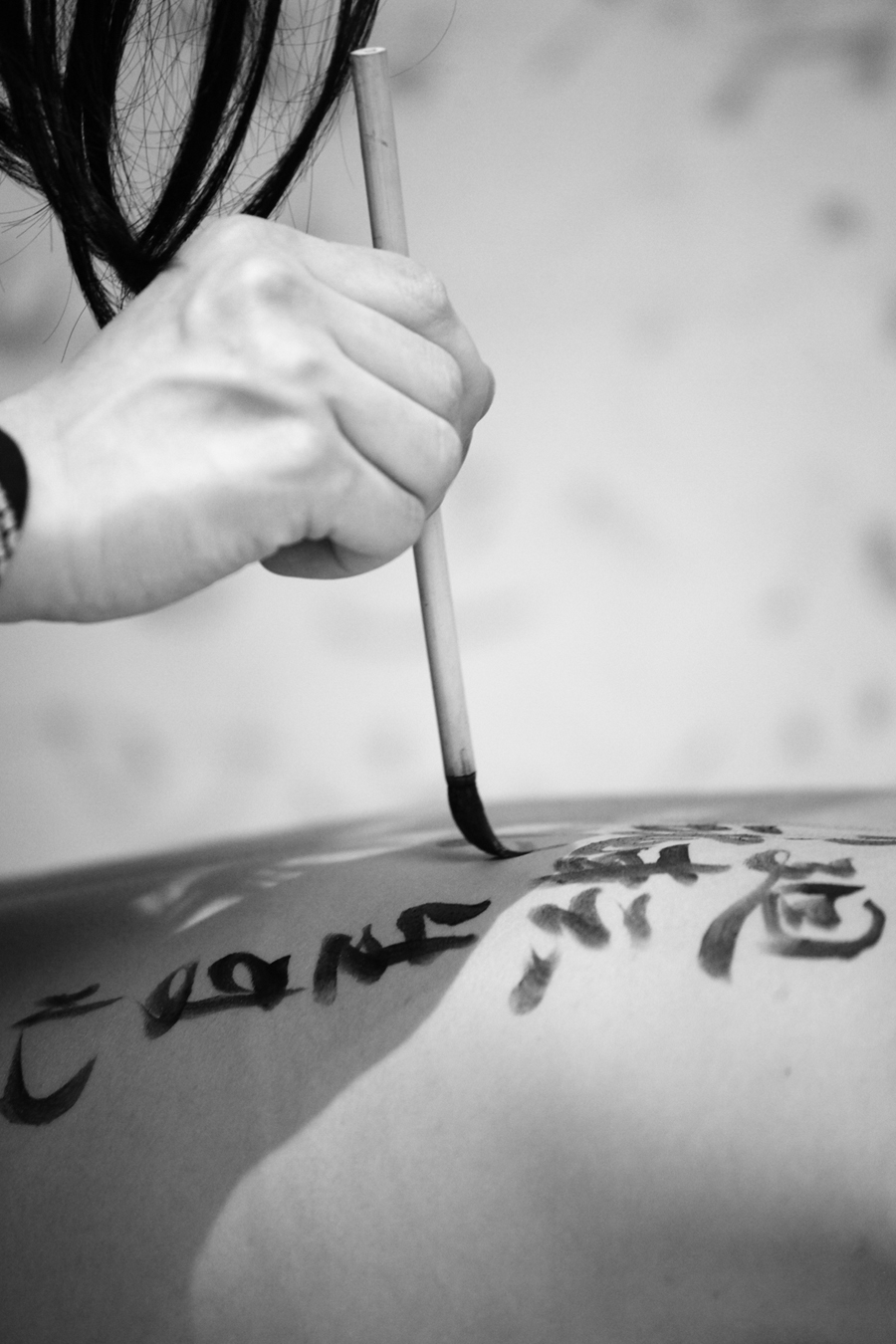
Photo by Raphael Rapior
Over her years living in Europe, Takeda took on the role of calligraphy teacher, and while she does focus on technique, she also makes a point to share how the activity can be a time to meditate and ideal for self-introspection. To introduce Japanese culture to a wider audience outside of calligraphy and art, the artist hosts a mobile soirée throughout Europe under the name Wasabi Lounge. Open to all who are fans of art and Japanese culture, these events are held wherever venues are available and whenever her busy schedule allows it.
Takeda’s next project involves going back to her roots in Hokkaido, where she’ll spend most of summer 2019 and subsequent visits immersing herself amongst the native Ainu population. It’ll be interesting to see how she balances her techniques with such a rich and controversial subject matter, but she says the project’s purpose is to bring peace of mind to many.
Find more information about Rie Takeda’s work on the artist’s website at rietakeda.com





